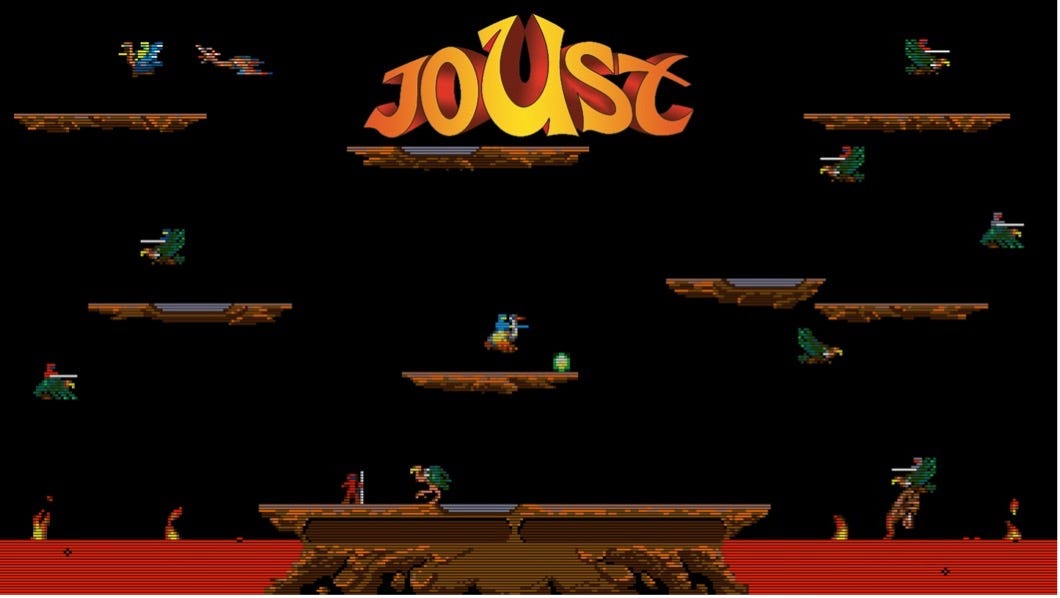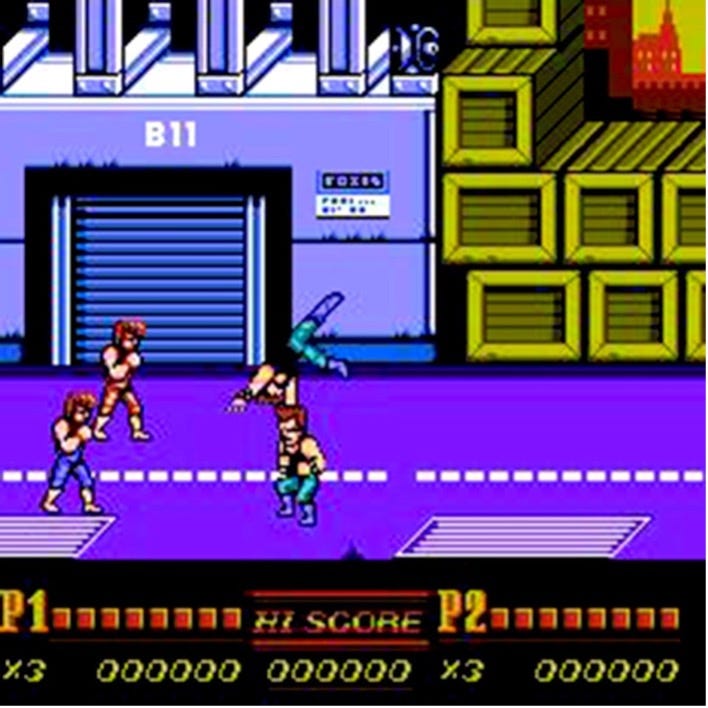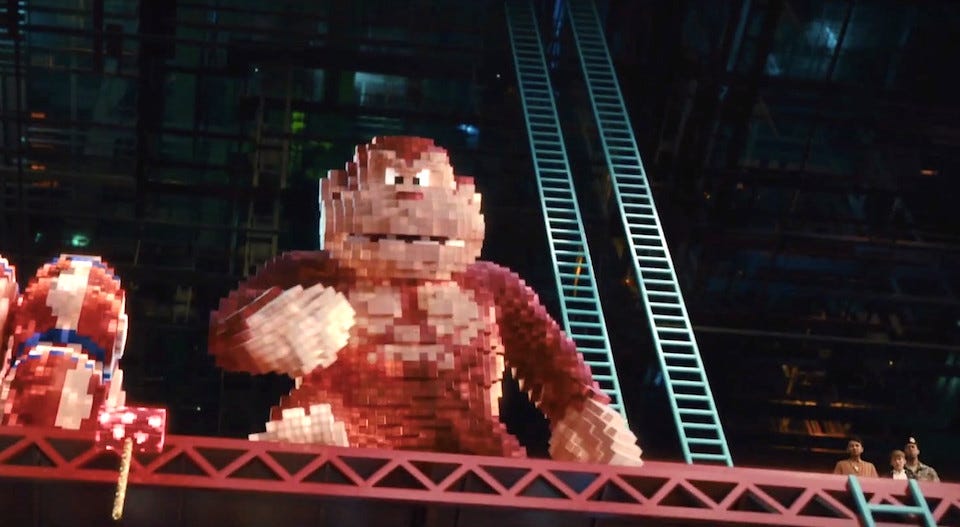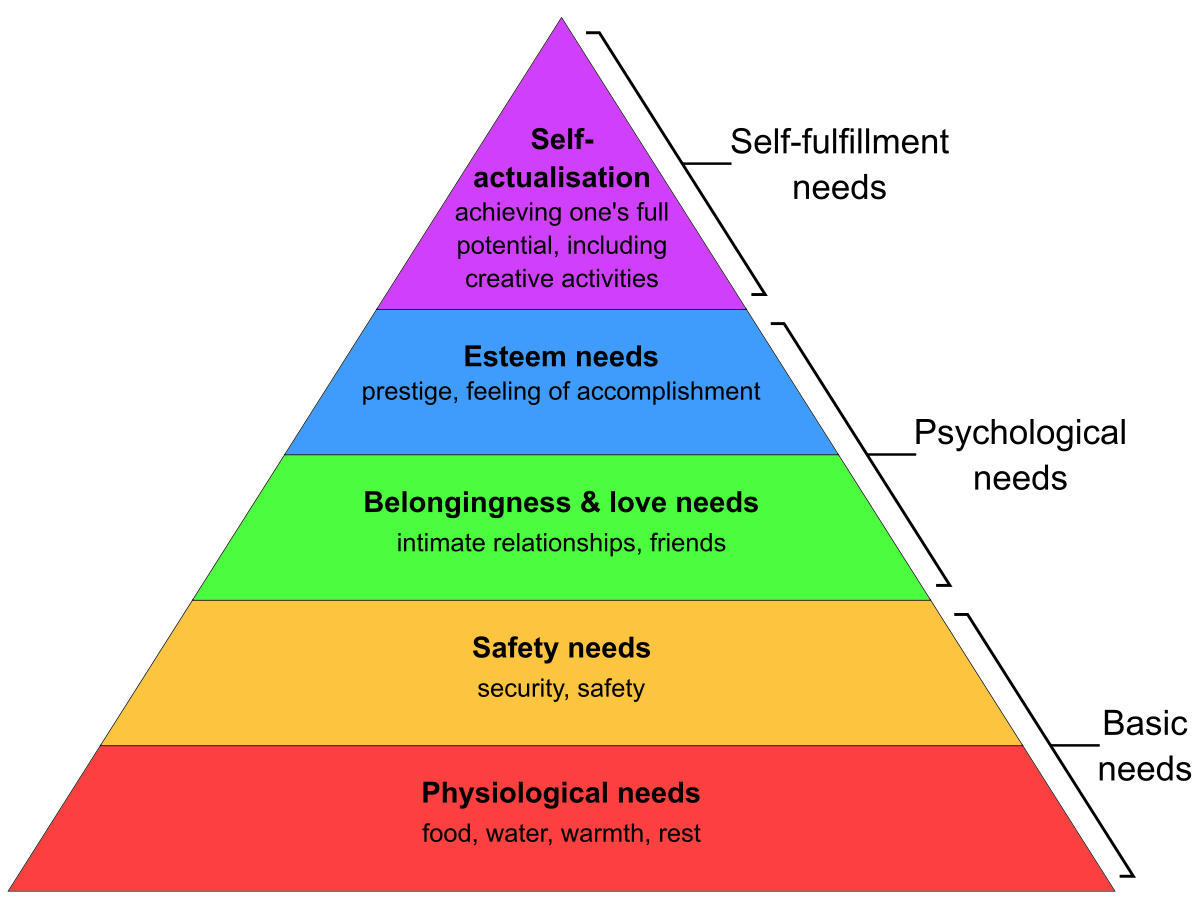What I learned from playing video games with my sons | Part 3
Part three of a three-part series.
This is Part 1 of a three-part series. Part 1 can be found here, and Part 2 here.
Fair warning: this writing may be very boring to you if you did not grow up around video games, don’t like video games, or are otherwise not a fun person to be around. This is also a walk down memory lane, so if you didn’t grow up on my lane, you might find yourself in unfamiliar territory.
In Part 1 of this series I talked about my experiences playing video games with my sons as a way to connect with them. Then, in Part 2 I talked about my brief addiction to Virtual Reality (VR) games over the holidays. If this were a three-act play, Part 2 was akin to The Empire Strikes Back where we ended in a dark place, and I got my hand cut off by a light saber.
OK, not really, but that would’ve made for an interesting twist, and likely a lawsuit against Beat Saber.
Now, Part 3 is the culminating act where I embrace video game play, my sons tell me I’m the wisest dad ever, and we all do our work, chores, and studies on-time and with perfection…and then go play video games together.
Or it may end with me throwing the Emperor down a reactor shaft, after which I die peacefully in my son's arms and later appear as a ghost to watch my son party with a bunch of Ewoks. I guess we’ll see how this turns out. Either way, Jar Jar Binks will not be in the story.
Once again I feel compelled to provide a fair warning--if you didn’t understand any of those references, then this story is likely not for you. And, you’re likely not a very fun person.
Flashbacks
After playing VR, I convinced my sons to play something more cooperative and more old school—video games from the 1980s. My games of choice: Contra, Joust, and Double Dragon. Each of these was chosen for a specific reason, be it nostalgia, quality, or teaching purposes. Translation: these are games I figured I could thoroughly destroy them on.
Actually, these are all cooperative games--at least as much as 1980’s games were…which is to say you could still find ways to hurt each other.
Just as I was no stranger to video games before my children let me play with them, they were no strangers to retro video games. I had already shown them Pac-Man, Tetris, Defender, Galaga, Zelda, and a few others. Thanks to emulators, you can play all the old classics online or download them to computer or gaming systems.
But this was going to be different. These were games they had never played. So, without further ado here we go:
Contra
I first played this game with my cousin in an arcade at the New Mexico State Fair in the late ‘80s. It’s a classic run-and-gun video game where you work with a partner to kill bad guys and advance from level to level—each one getting progressively more difficult. There’s so much to like about this game.
First, its cooperative, so two people can be playing at the same time. But, because you’re both on the same screen, and the screen only scrolls left and right, or on some levels, up and down, you also must coordinate your movements to avoid one person (let’s say, my son) accidentally falling into a pit because the screen didn’t advance when the other player (perhaps me) went back for a better gun.
Second, adding even more fun, you can let your partner use some of your extra lives to continue playing—this is especially helpful when fighting a boss and your partner dies. However, your partner does not need your permission to take your extra lives, so that adds an interesting dynamic.
For example:
Son: “Hey, what happened to all my extra lives? I had like three extra lives! Wait, I thought you died?”
Me: “Oh, huh. That’s weird.”
Third, you can make your character change direction mid-jump--a very realistic feature, if I do say so myself. This is perfect for dodging bullets or lasers…also, again, very realistic.
Fourth, it’s predictable, mostly. This highlights the beauty of these older games—the enemy characters pretty much always come at you the same way, so it’s possible to memorize the sequence and timing. Alas though, it still comes down to you remembering that order and being able to execute your moves accordingly. This becomes the challenge, and a challenge it really is, because even though it’s mostly predictable, it’s not always predictable. Sometimes you’ll encounter a slight glitch which will cause enemies to spawn at unexpected times. This just adds to the fun.
We came so close to beating this game, but could just never quite make it all the way through.
Because it was published by Konami, you could use the infamous “Konami Code” to receive 30 lives to start, instead of the normal three. We never did this…as far as you know.
Joust
Joust first came out on the Atari. And though we didn’t have an Atari at my house growing up, my cousin did (yes, same cousin as above), and that’s where I played it. Truth be told, I didn’t play much Joust growing up. My favorite games on the Atari were:
Pitfall!
Loved that game…made me feel like Indiana Jones.
Warlords
Kind of like Breakout where you destroy bricks by bouncing a ball, except four people play simultaneously and the goal is to use the ball to destroy other people’s bricks. This game used the Atari paddles—the ones with the round wheel that you just turned back and forth.
Tanks
You know the one. Tons of hours of enjoyment with that one. The sound of the tanks rumbling across the screen will be forever etched in my brain.
E.T. The Extra-Terrestrial
My absolute favorite game, and one that led to hours of enjoyment…ok, not really, it just led to minutes of frustration before I moved on to another game. I never could get it to work right, and apparently, I’m not the only one, as it was notoriously rushed to market and is legendary in its awfulness. I won’t even link to the many stories about it—all you need to do is google “ET worst Atari game” to see the many articles.
Anyway, back to Joust. The story line is very straightforward and cohesively themed: players are knights with lances who ride on a flying ostrich, or stork, and try to spear enemy knights, who are also riding ostriches. You fly these birds over a lava pit, and if you take too long to kill the enemies, pterodactyls randomly attack you. Also, if you fly too close to the lava pit, a troll’s hand reaches up to pull you into the lava.
Like I said, straightforward and cohesively themed.
The longer you play, the more enemies spawn and the faster they get. The key to the game is to repeatedly push the controller’s button to make the bird’s wings flap, causing your character to rise, thereby putting you above the enemy and allowing you to win the constant duels that occur while you fly around. The tricky part is that enemies are flying all over the screen in different directions and altitudes, bouncing off each other, the ceiling, and platforms. They can, and will, exit one side of the screen only to pop up on the other side, so you must watch above and below as well as left and right.
After many tries my son and I made it as far as the 40th level. Sadly, I have no idea how many levels there are to this game, and can’t find it on the internet anywhere, so I’m not sure if we were close to beating it. Eventually, the speed of the enemy jousters and the haphazard timing of the invading pterodactyls became too much for us. Also, my thumb cramped from repeatedly pushing the button. Apparently I’m out of shape for this type of thing.
Double Dragon
Ah, Double Dragon. The story of two brothers who use martial arts to fight their enemies and save the damsel in distress.
This game is far more realistic—in that you cannot change the direction of your jump mid-air. It is also more difficult in that you must be precise on which pixel you jump from when leaping from one platform to another. We lost so many lives trying to jump over a pit, only to fall because we were one pixel off.
This game is marked by limited lives, clunky controls, and simple graphics. These were the hallmarks of games in that era. There’s something to be said for that simplicity.
Of the three games I’ve covered here, the only one we beat was Double Dragon. Unfortunately, my son died on the last level, and I had to take on the final boss alone. Surviving with just a few blocks of health remaining, I defeated the boss and saved the girl. Queue up “We are the Champions” and watch me do my dad victory dance—it’s both impressive and embarrassing.
I later learned that had both of us survived and beaten the boss, we would’ve had to fight each other. As they say in Highlander, “There can be only one.”
That alternate timeline of events would’ve ended in some epic father-son coming-of-age battle. The Master and the Padawan fighting to the death. Thankfully, we didn’t have to experience that, and both of us still have our hands attached…and no one was thrown into a reactor.
Comparisons of old and new
Let’s face it, no matter how many good aspects of video games I observe, this wouldn’t be an article by a dad about video games unless there were some observations and lessons learned. Sorry kids (and adults still sitting in your parent's basement).
Limited lives
As hard as it was to beat some of these games on limited lives, dying provided a natural break and made us want to stop playing. At some point as kids we just got sick of starting over from the beginning time after time, so we turned off the machine, went outside, and rode our bikes. It felt good to walk away—unfortunately, things are not designed to help us do this today—they’re designed to keep us coming back. Limited lives also meant that if you beat the game, it was something to be proud of…at least in gaming circles.
Multi-player was in-person
If you wanted to play with your friends, they had to be in the same room with you. The goodness of this cannot be overstated and cannot be replicated online. Sure, conflicts arose, and at times someone may have rode back to their own home upset—but at least you had that conflict in-person. Being together encouraged dialogue that might not occur if you were talking to one another on headsets.
Also, if you didn’t have enough controllers, you learned to rotate game play. Then, when everyone was done playing, you were together and could go do something else, together. If someone did well, they got a high-five, if they killed you in the video game, they might’ve gotten punched in the shoulder, or wrestled to the ground, or both. That interaction is priceless.
Deep sensory connection
The boot-up music from the classic video games immediately transported me to memories of playing with my friends as a kid—sitting on the floor as close as possible to the smaller TV screen, while munching on Skittles. Even more amazing, I found that after 40+ years I could still remember certain controller movements and enemy patterns. Muscle memory came back, and I could hold my own. But more than that, I was better than my sons at these games.
I felt like there might’ve been something a little different when I played games with my boys this time. Perhaps a little more respect of my gaming prowess. I even schooled them at the elusive Double Dragon platform-to-platform jump where you must be at the exact right pixel and jump at the exact right time.
Deciphering patterns
The movie Pixels poked fun at the fact that these early games were pattern-based and that in the real world you need to think outside of the box—you can’t just memorize sequences in life to win. Which, philosophically, is an interesting thing to ponder…because, in reality, you do have to understand patterns to survive.
As humans, we’re creatures of habit who enjoy pattern and similarity. In fact, we survive on it. Our instincts are nothing more than patterns from the past extrapolated into the future.
Today’s games also have patterns—methods to kill enemy forces, sequences that must be followed to solve puzzles, and bosses that grow ever more difficult, but are based on past lessons learned.
Yet, due to computing power and graphics, today’s games are far more complex and the patterns they contain are more elaborate—bosses require more intricate combinations of attacks, weapons are more varied and numerous, and levels sprawl across three dimensional landscapes that require specific combinations of controller movements to navigate over. So, in this regard, today’s games offer more choices. I suppose they more accurately reflect reality…if I can even say such a thing. This, I think, is what makes them even more fascinating and alluring.
In Conclusion
Like I mentioned on Part 1 of this series, video games are not going away. There is no distinct line between healthy and unhealthy use of them. But that’s kind of the thing with life in general, the line is different for everyone and with everything. One person’s golf game is another person’s streaming session is another person’s video game play is another person’s drug use.
Entertainment and addiction come in many different forms. Addiction is possible with the never-ending pursuit to perfect one’s golf game, the never-ending library of movies to watch, and the never-ending catalogue of video games to play and conquer. Instead, it’s more about boundaries and priorities--about ensuring the right things are being done in life, and in the right order.
As the writer of Ecclesiastes notes, “There is nothing new under the sun”--yes, video games, or VR headsets, or artificial intelligence may be a new thing, but the way humans behave and the things that drive and motivate us do not change greatly.
Maslow’s hierarchy of needs model explains that the base levels of human needs must be fulfilled before higher levels can be satisfied, and in the same way, if you take care of the core things in life, you can enjoy the things at the top of the pyramid…but when the pyramid gets flipped, or you focus just on the top, the foundation crumbles.
As my boys grow older and life has demanded more of their time and brain capacity, I think they’re better understanding why dad’s video game playing tapered off. Life just presented other priorities that were more important.
Work, home maintenance, grocery shopping, cooking dinner, taking care of family, forming relationships with others--these are not always fun or easy things, but they are needed things, and when the needed things are done well, then the fun things can be enjoyed. Like partying with Ewoks.











